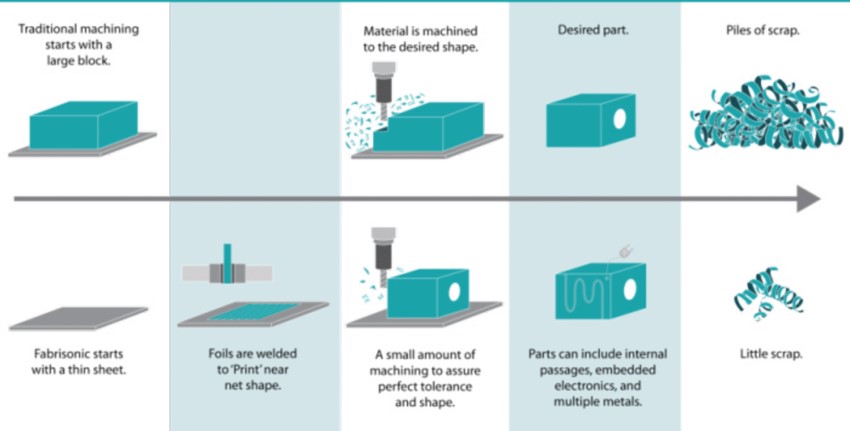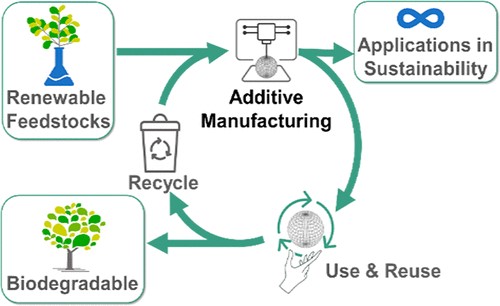In the modern era, technological advancements have drastically transformed industries, sustainable development is one of the major challenges that mankind is facing. Several technologies are seen an potential solutions for resolving sustainable challenges. One of such promising technology is additive manufacturing or 3D printing. 3D printing has not only revolutionised production processes but has also emerged as a key promoter of sustainability across various sectors.
COP28 UAE will take place from 30 November to 12 December 2023 at Expo City, Dubai in the United Arab Emirates. By hosting COP28, the UAE is focusing on practical and positive solutions that drive progress for the climate and the economy, as well as provide relief and support to vulnerable communities. The UAE intends to make COP28 highly inclusive, reflecting the views of all geographies, sectors, and constituencies. With the upcoming event in mind, this special insight article throws light on some of the aspects of 3D printing in sustainability.
The Environmental Advantages of 3D Printing
Additive manufacturing minimizes material waste by using only the exact amount needed for production. Traditional manufacturing often leads to significant material wastage during the cutting and shaping processes, whereas additive manufacturing builds objects layer by layer, optimizing material utilization. Traditional manufacturing processes, such as injection molding and CNC machining, require a substantial amount of energy to shape and mold raw materials. In contrast, additive manufacturing significantly reduces energy consumption by building objects layer by layer without the need for extensive machinery or excessive heat.

Additive manufacturing enables localized production, reducing the need for long-distance transportation of goods. This reduces the carbon footprint associated with shipping and transportation, as well as the associated emissions. The design freedom offered by additive manufacturing allows for the creation of complex and lightweight structures. These optimized designs reduce the overall weight of objects, leading to fuel savings in applications such as aerospace and automotive industries.

Additive manufacturing facilitates on-demand production, enabling companies to manufacture products as needed, reducing excess inventory and the waste that often accompanies it. This process is having significant advantage on enhancing the sustainability of various sectors.

Green additive manufacturing is an emerging concept that uses biodegradable and renewable materials for additive manufacturing. In this method, source materials such as filaments, resins and metal powders are sourced from sustainable & renewable sources, enhancing the overall sustainable impact on additive manufacturing.
Case Studies of Sustainability improvement using additive manufacturing
With regard to medical advancements, companies specializing in medical devices are now crafting customized hip implants that possess the ability to stimulate bone regeneration. These implants feature intricate porous internal structures, a feat previously unattainable through conventional manufacturing methods. This innovation not only enhances patient outcomes but also underscores the transformative potential of additive manufacturing in healthcare.
In the aerospace sector, the Air Force has harnessed the power of 3D printing to fabricate replacement metal parts on-demand. By sidestepping the need for extensive and expensive inventories or enduring protracted waits for components sourced from hard-to-find suppliers, this agile approach ensures rapid and efficient maintenance, thereby bolstering operational readiness.
Meanwhile, General Electric has orchestrated a paradigm shift in the aviation industry with their additively-manufactured fuel nozzle for commercial airplane engines. By consolidating a once multipart assembly into a single component, the company has achieved a substantial 30 percent reduction in production costs. Moreover, this innovation has yielded a nozzle that is not only 25 percent lighter but also boasts an impressive fivefold increase in durability, exemplifying the manifold advantages of additive manufacturing in terms of efficiency, performance, and sustainability.
Challenges and Future Outlook
While additive manufacturing holds immense promise for promoting sustainability, there are still challenges to overcome. Material sustainability, recycling of 3D printed products, and the energy consumption of certain high-performance additive processes are areas that require continued research and development. As technology advances, additive manufacturing is expected to become more accessible and efficient, further driving its adoption across industries. Collaborative efforts between researchers, industries, and governments can play a crucial role in addressing challenges and maximizing the positive impact of additive manufacturing on sustainability.
Additive manufacturing is a significant tool to create a more sustainable future. By minimizing material wastage, reducing energy consumption, enabling localized production, and promoting design optimization, additive manufacturing is helping industries and advancing sustainable practices. As the world continues to grapple with environmental challenges, the role of additive manufacturing in driving positive change cannot be overstated. Its ability to combine cutting-edge technology with eco-conscious practices makes it a cornerstone of sustainability in the digital age.
References:
Miriyev, A., Kalabukhov, S., & Frage, N. (2016, March). Ultrasonic additive manufacturing of dissimilar material systems: method, post-processing and properties. In Proceedings of the Fraunhofer Direct Digital Manufactruing Conference (DDMC2016).
Mehrpouya, M., Vosooghnia, A., Dehghanghadikolaei, A., & Fotovvati, B. (2021). The benefits of additive manufacturing for sustainable design and production. In Sustainable manufacturing (pp. 29-59). Elsevier.
Sanchez-Rexach, E., Johnston, T. G., Jehanno, C., Sardon, H., & Nelson, A. (2020). Sustainable materials and chemical processes for additive manufacturing. Chemistry of Materials, 32(17), 7105-7119.


